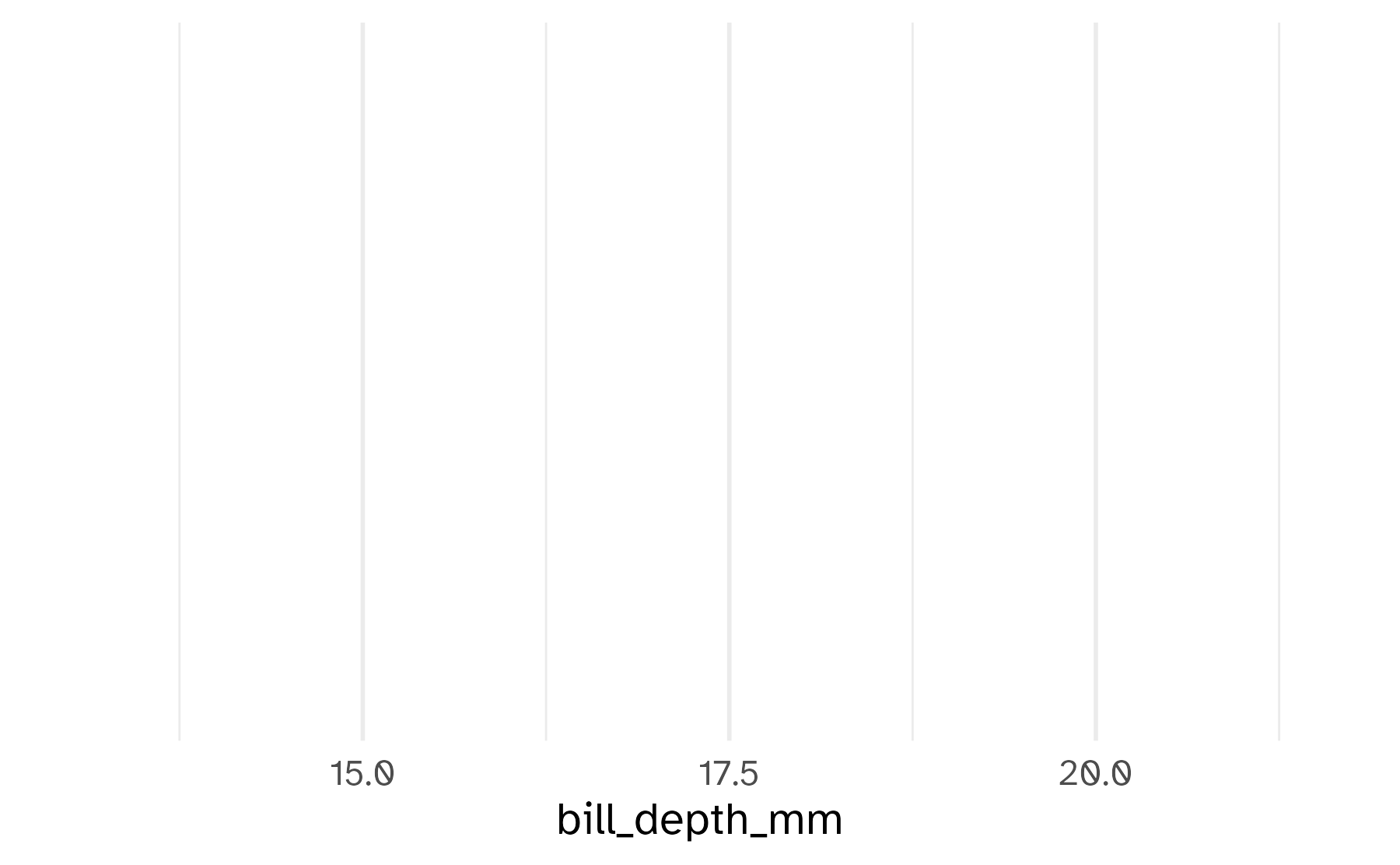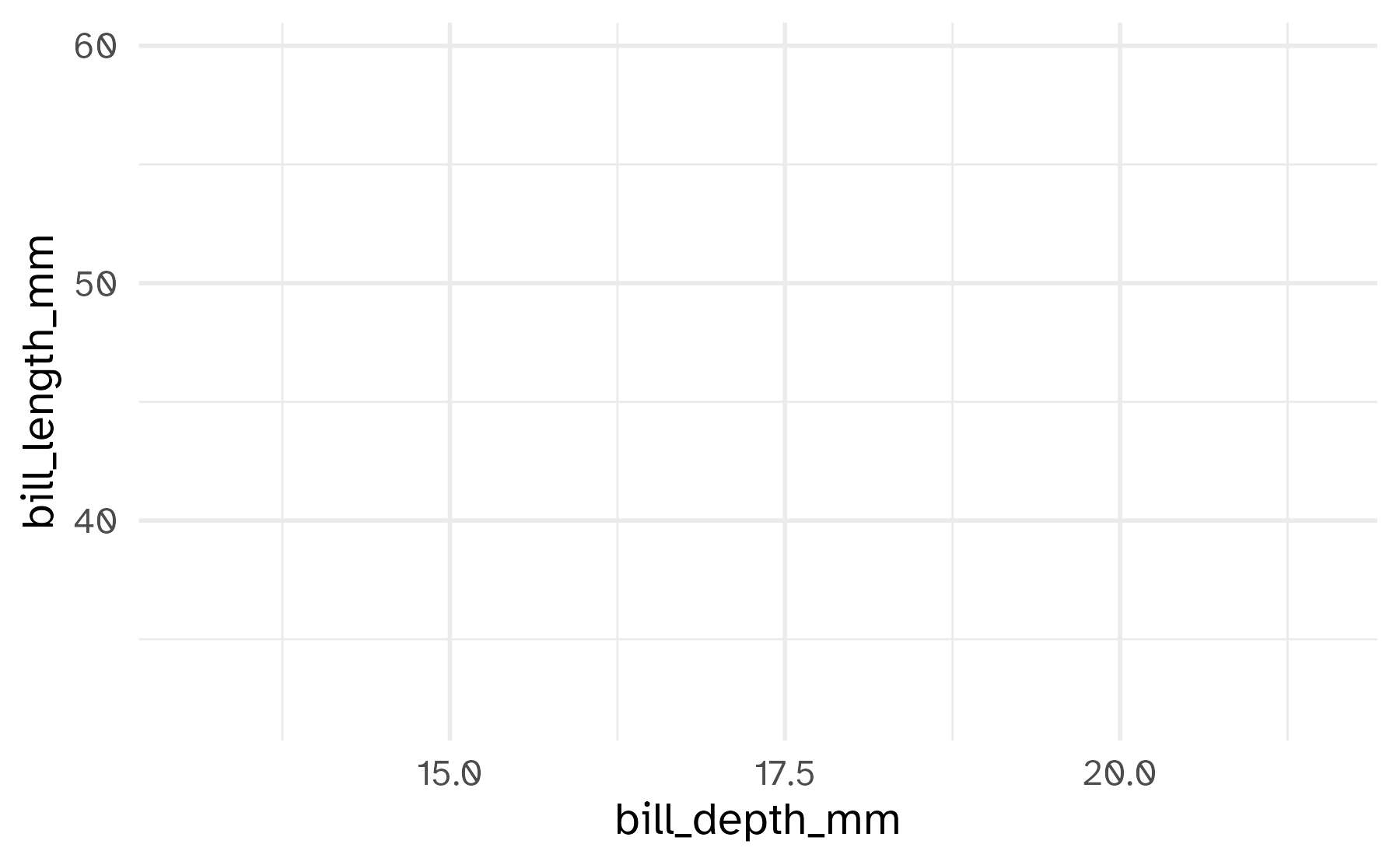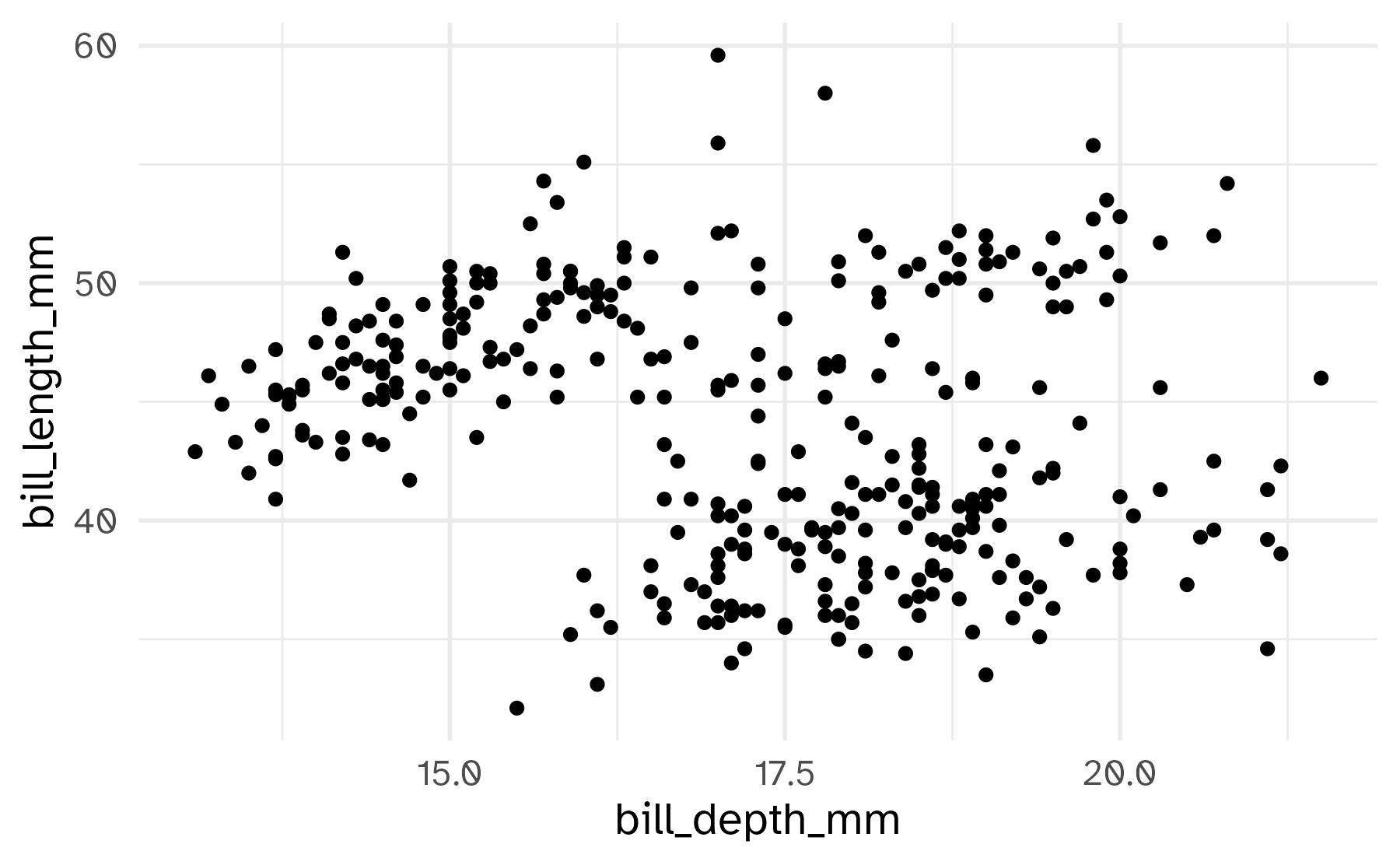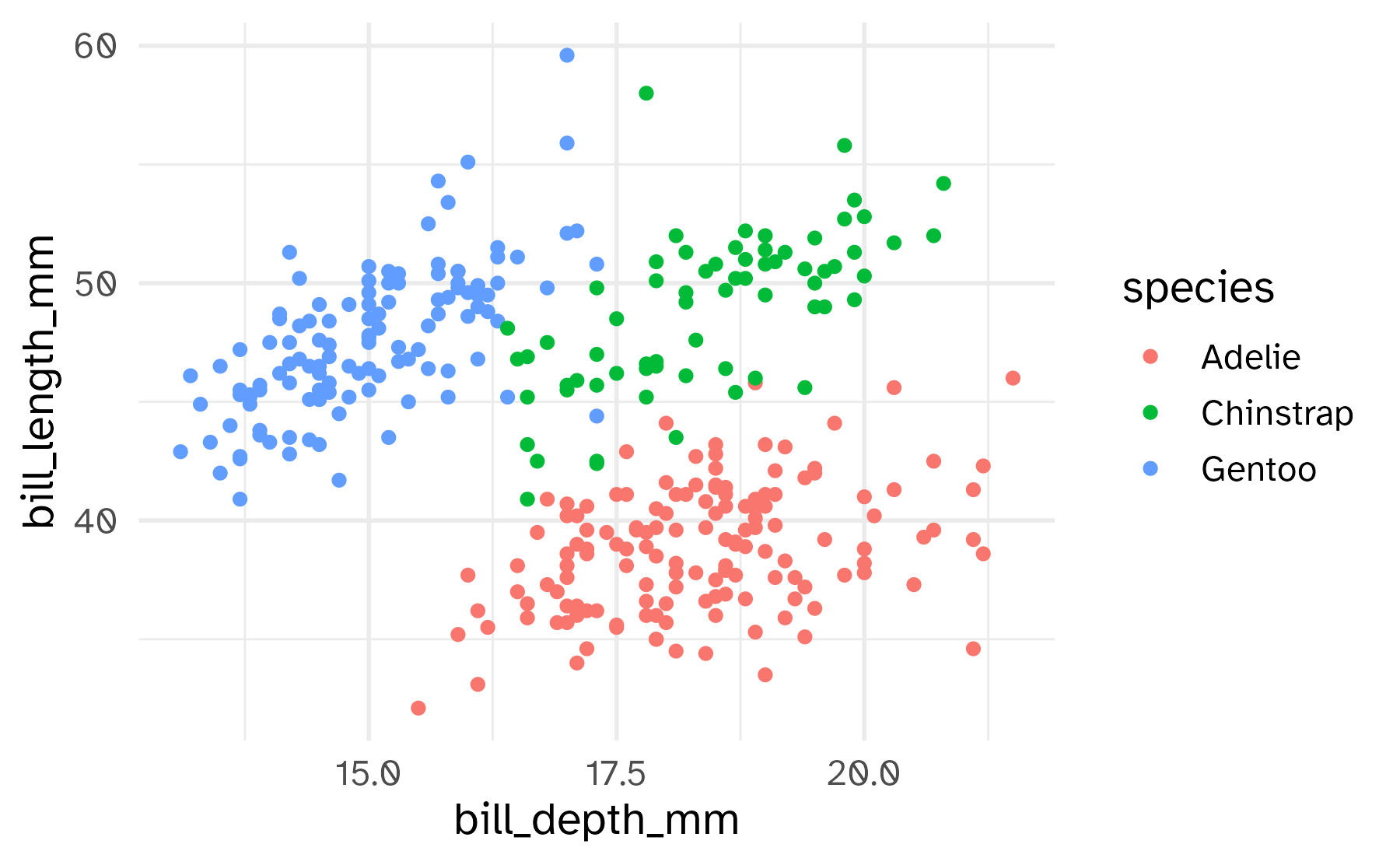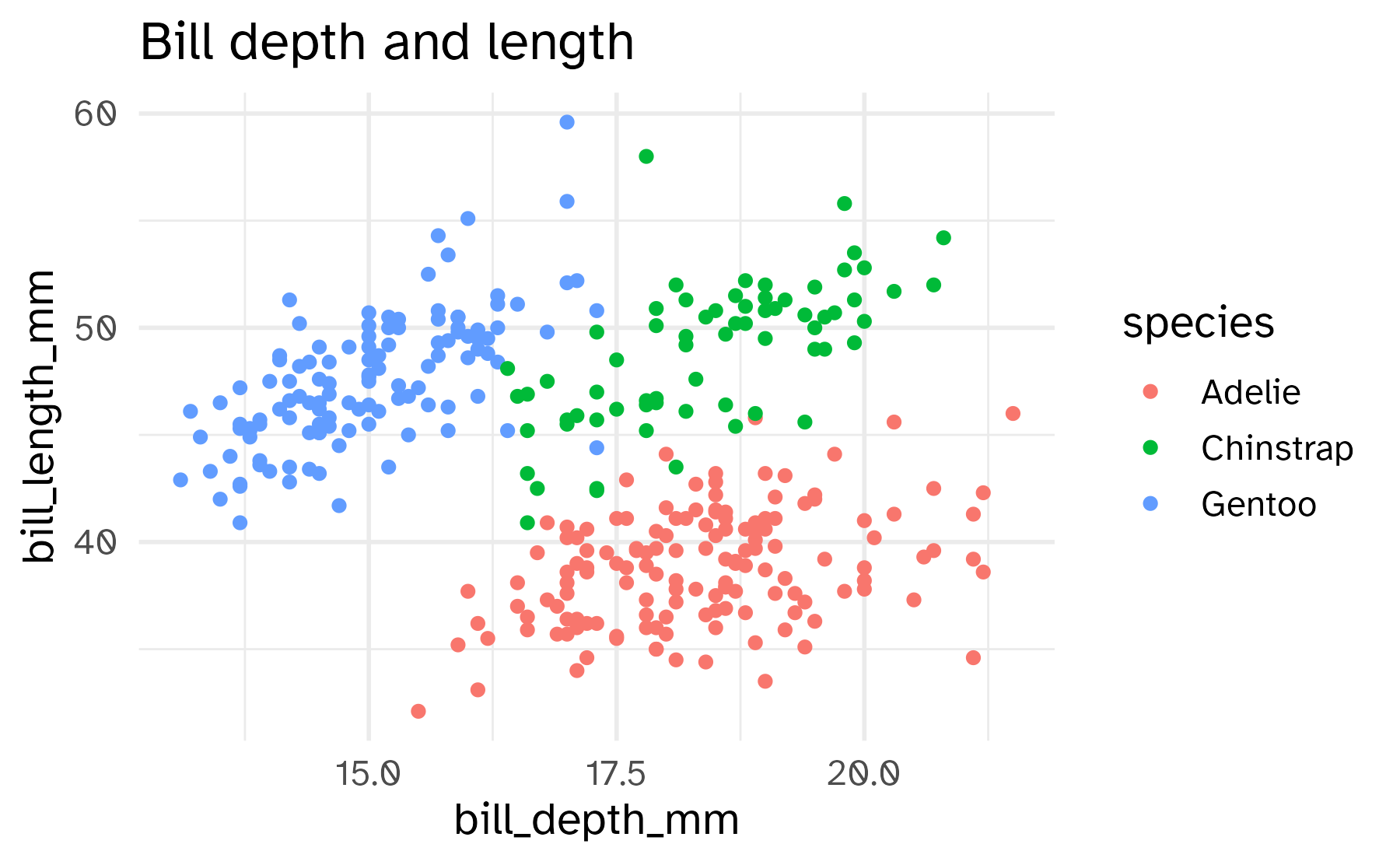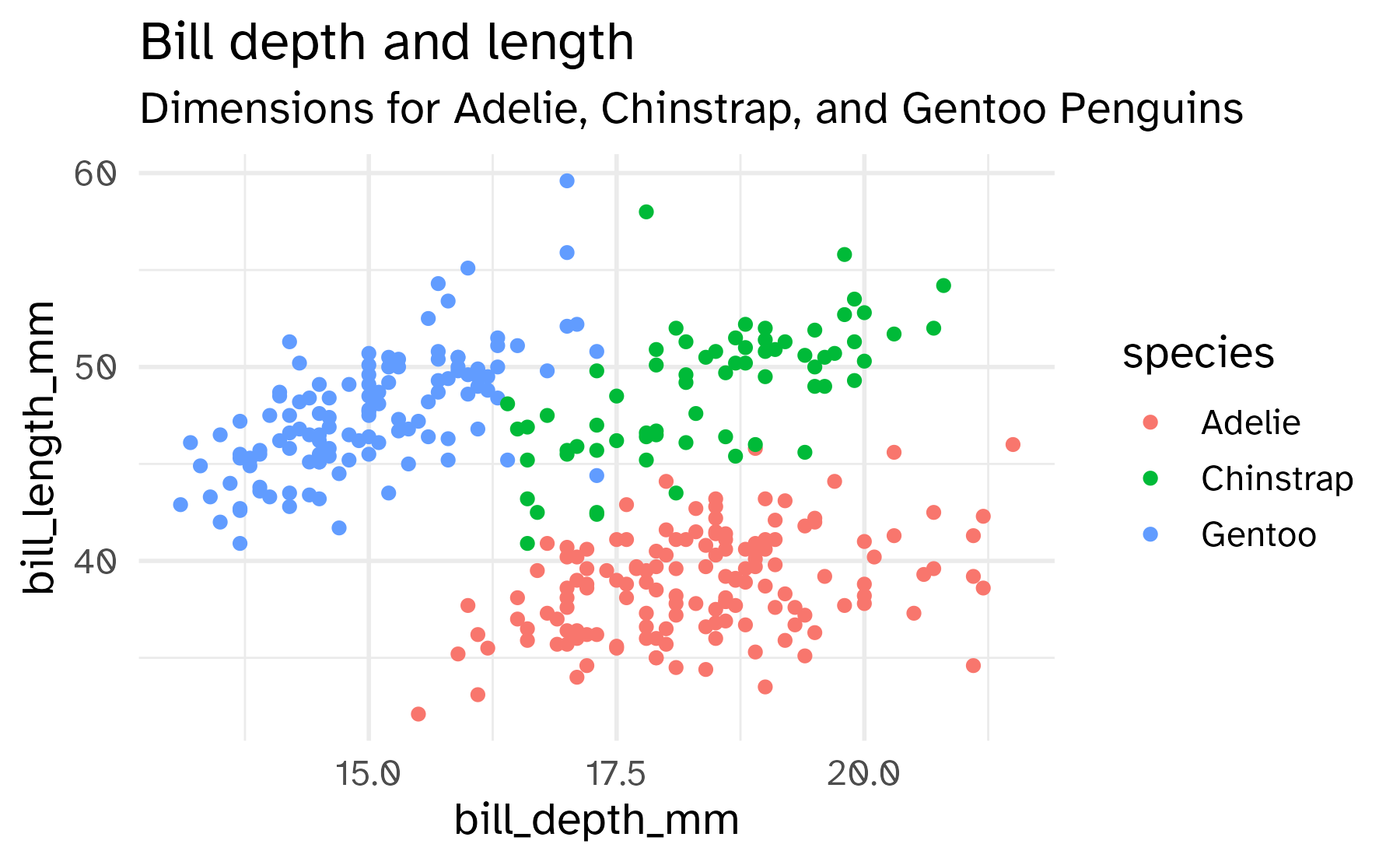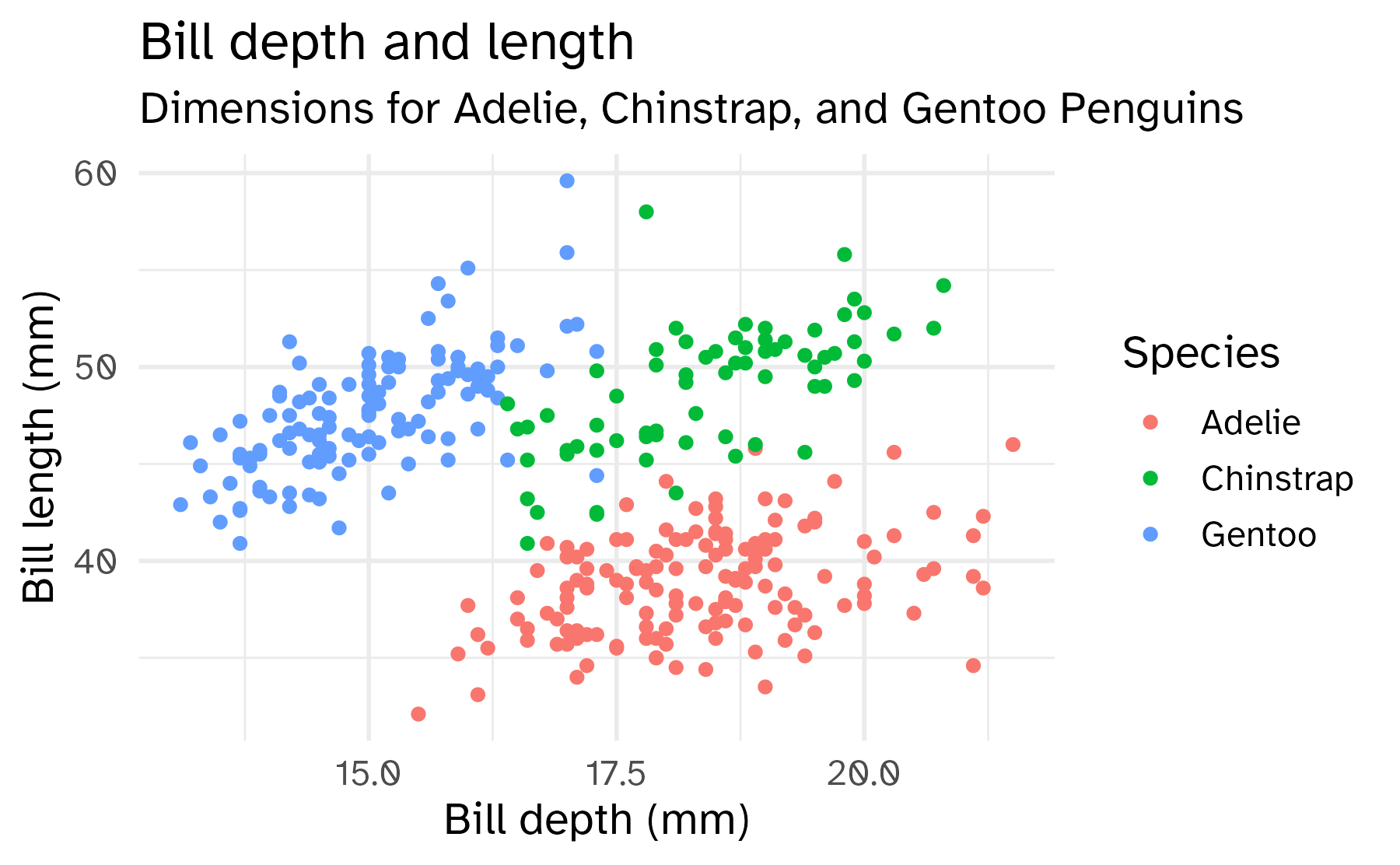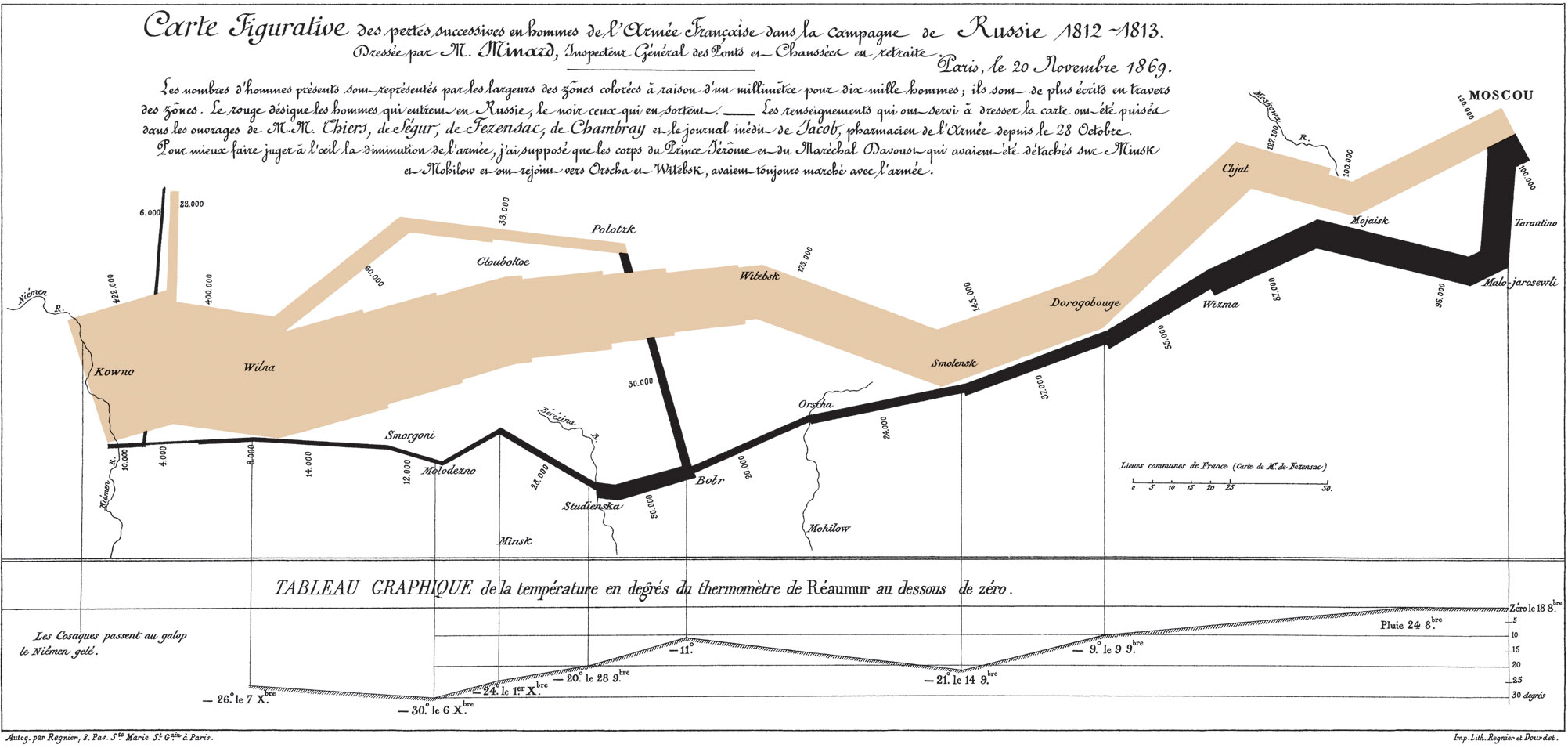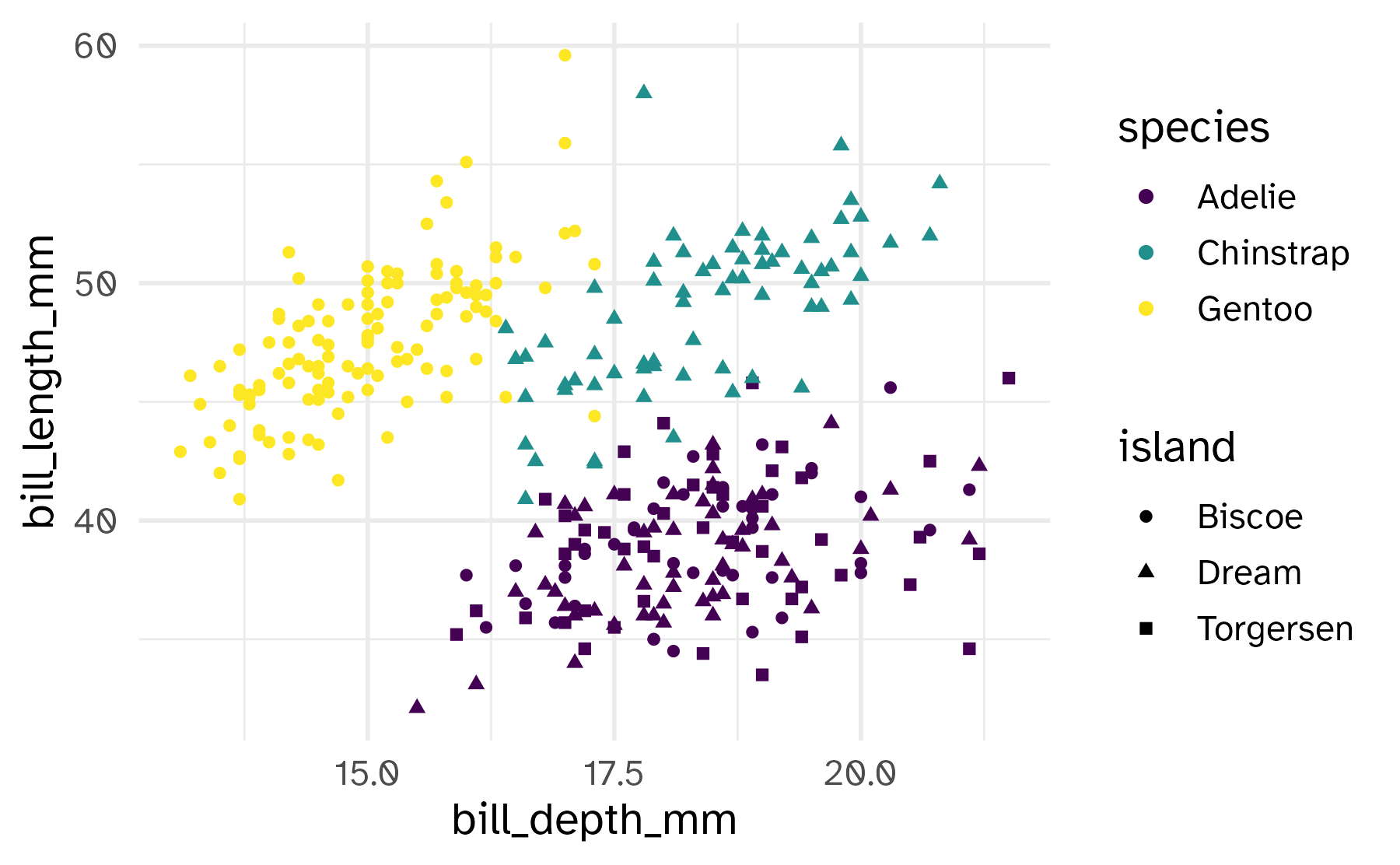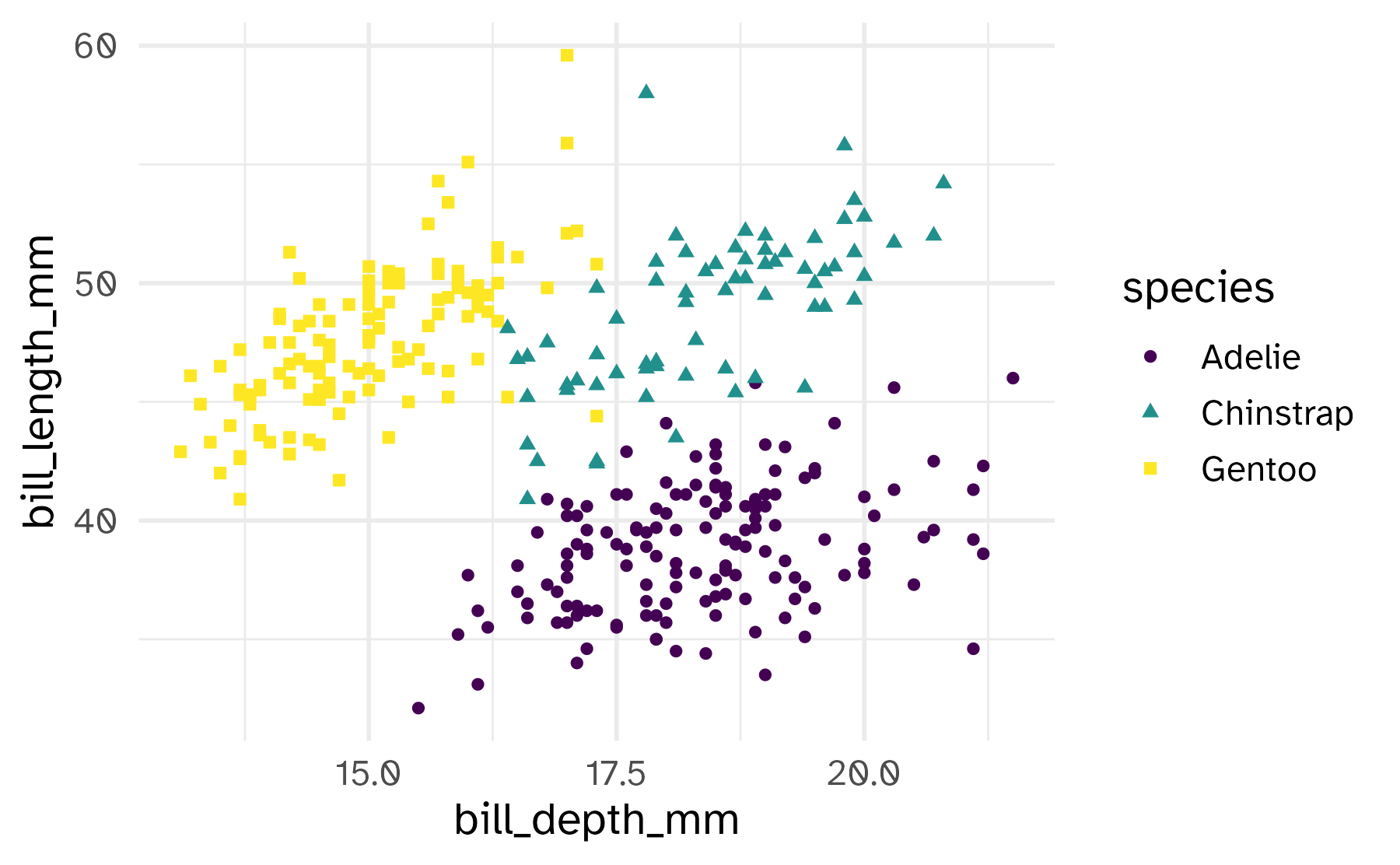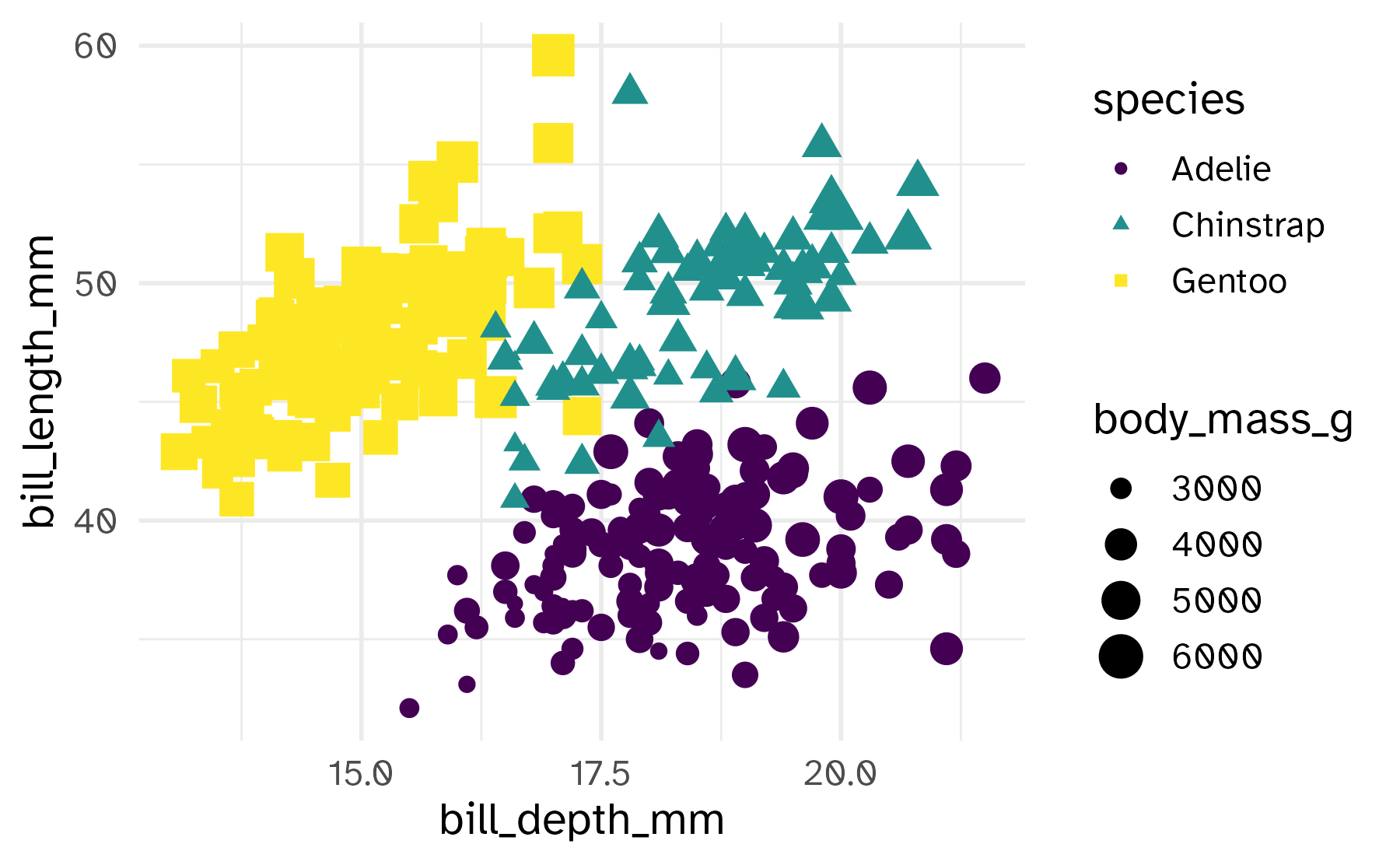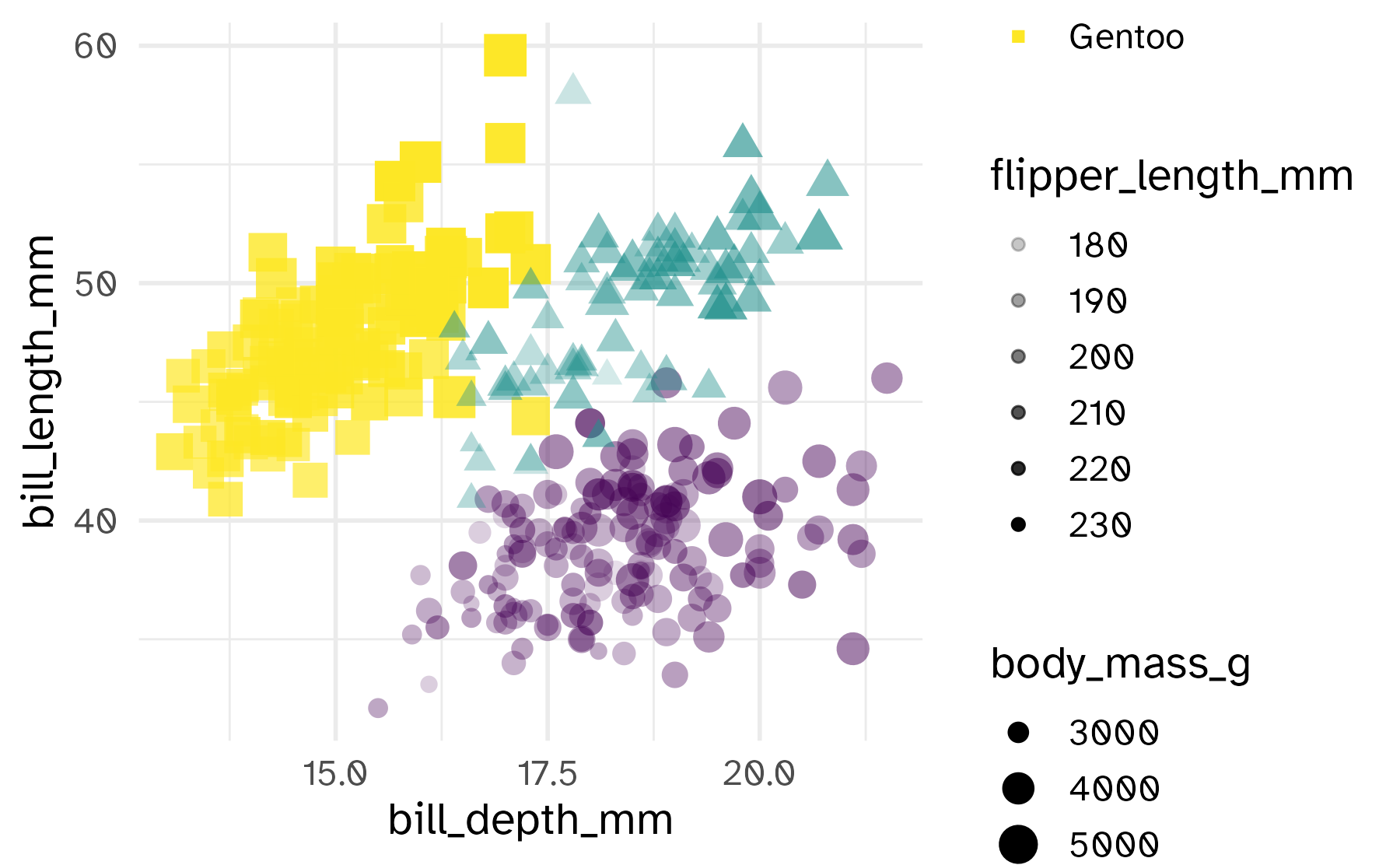Rows: 344
Columns: 8
$ species <fct> Adelie, Adelie, Adelie, Adelie, Adelie…
$ island <fct> Torgersen, Torgersen, Torgersen, Torge…
$ bill_len <dbl> 39.1, 39.5, 40.3, NA, 36.7, 39.3, 38.9…
$ bill_dep <dbl> 18.7, 17.4, 18.0, NA, 19.3, 20.6, 17.8…
$ flipper_len <int> 181, 186, 195, NA, 193, 190, 181, 195,…
$ body_mass <int> 3750, 3800, 3250, NA, 3450, 3650, 3625…
$ sex <fct> male, female, female, NA, female, male…
$ year <int> 2007, 2007, 2007, 2007, 2007, 2007, 20…The grammar of graphics
Lecture 2
Cornell University
INFO 3312/5312 - Spring 2026
January 22, 2026
Announcements
Announcements
- Waitlist update
- Homework 01 due next week
Learning objectives
- Identify the importance of graphics in communicating information
- Define the layered grammar of graphics
- Utilize the grammar of graphics to conceptually define Minard’s graph of Napoleon’s invasion of Russia
Visualization critique
Racial, ethnic diversity in Florida political parties 2022
Source: USA Today
ggplot2 ❤️ 🐧
ggplot2 \(\in\) tidyverse
Data: Palmer Penguins
Measurements for penguin species, island in Palmer Archipelago, size (flipper length, body mass, bill dimensions), and sex.

Example drawn from STA 313
Coding out loud
Start with the
penguinsdata frame, map bill depth to the x-axis and map bill length to the y-axis. Represent each observation with a point and map species to the color of each point. Title the plot “Bill depth and length”
Start with the
penguinsdata frame, map bill depth to the x-axis and map bill length to the y-axis. Represent each observation with a point and map species to the color of each point. Title the plot “Bill depth and length”, add the subtitle “Dimensions for Adelie, Chinstrap, and Gentoo Penguins”
Start with the
penguinsdata frame, map bill depth to the x-axis and map bill length to the y-axis. Represent each observation with a point and map species to the color of each point. Title the plot “Bill depth and length”, add the subtitle “Dimensions for Adelie, Chinstrap, and Gentoo Penguins”, label the x and y axes as “Bill depth (mm)” and “Bill length (mm)”, respectively
Start with the
penguinsdata frame, map bill depth to the x-axis and map bill length to the y-axis. Represent each observation with a point and map species to the color of each point. Title the plot “Bill depth and length”, add the subtitle “Dimensions for Adelie, Chinstrap, and Gentoo Penguins”, label the x and y axes as “Bill depth (mm)” and “Bill length (mm)”, respectively, label the legend “Species”
Start with the
penguinsdata frame, map bill depth to the x-axis and map bill length to the y-axis. Represent each observation with a point and map species to the color of each point. Title the plot “Bill depth and length”, add the subtitle “Dimensions for Adelie, Chinstrap, and Gentoo Penguins”, label the x and y axes as “Bill depth (mm)” and “Bill length (mm)”, respectively, label the legend “Species”, and add a caption for the data source.
ggplot(data = penguins,
mapping = aes(x = bill_dep,
y = bill_len,
color = species)) +
geom_point() +
labs(title = "Bill depth and length",
subtitle = "Dimensions for Adelie, Chinstrap, and Gentoo Penguins",
x = "Bill depth (mm)", y = "Bill length (mm)",
color = "Species",
caption = "Source: Palmer Station LTER / palmerpenguins package")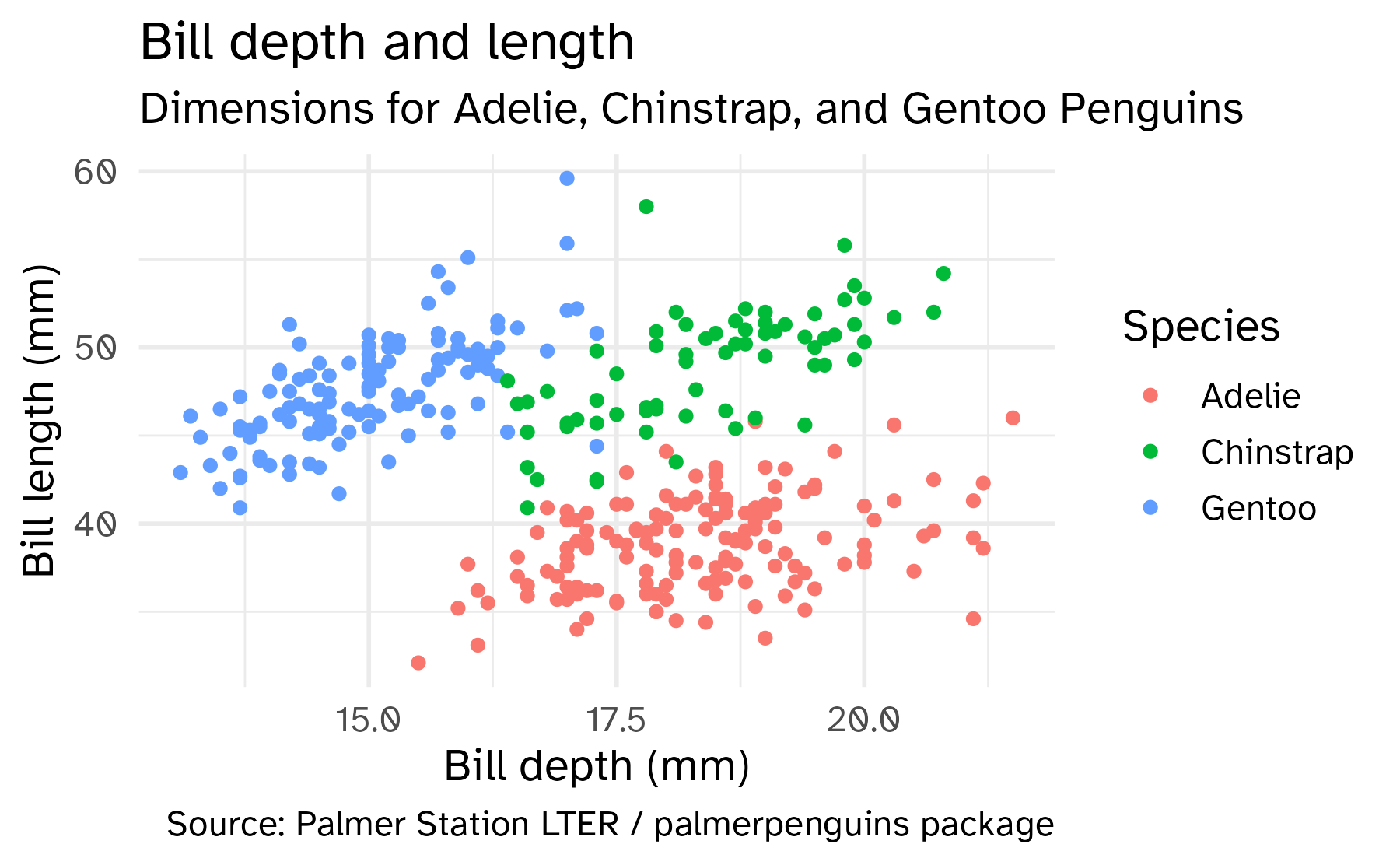
Start with the
penguinsdata frame, map bill depth to the x-axis and map bill length to the y-axis. Represent each observation with a point and map species to the color of each point. Title the plot “Bill depth and length”, add the subtitle “Dimensions for Adelie, Chinstrap, and Gentoo Penguins”, label the x and y axes as “Bill depth (mm)” and “Bill length (mm)”, respectively, label the legend “Species”, and add a caption for the data source. Finally, use a discrete color scale that is designed to be perceived by viewers with common forms of color blindness.
ggplot(data = penguins,
mapping = aes(x = bill_dep,
y = bill_len,
color = species)) +
geom_point() +
labs(title = "Bill depth and length",
subtitle = "Dimensions for Adelie, Chinstrap, and Gentoo Penguins",
x = "Bill depth (mm)", y = "Bill length (mm)",
color = "Species",
caption = "Source: Palmer Station LTER / palmerpenguins package") +
scale_color_viridis_d()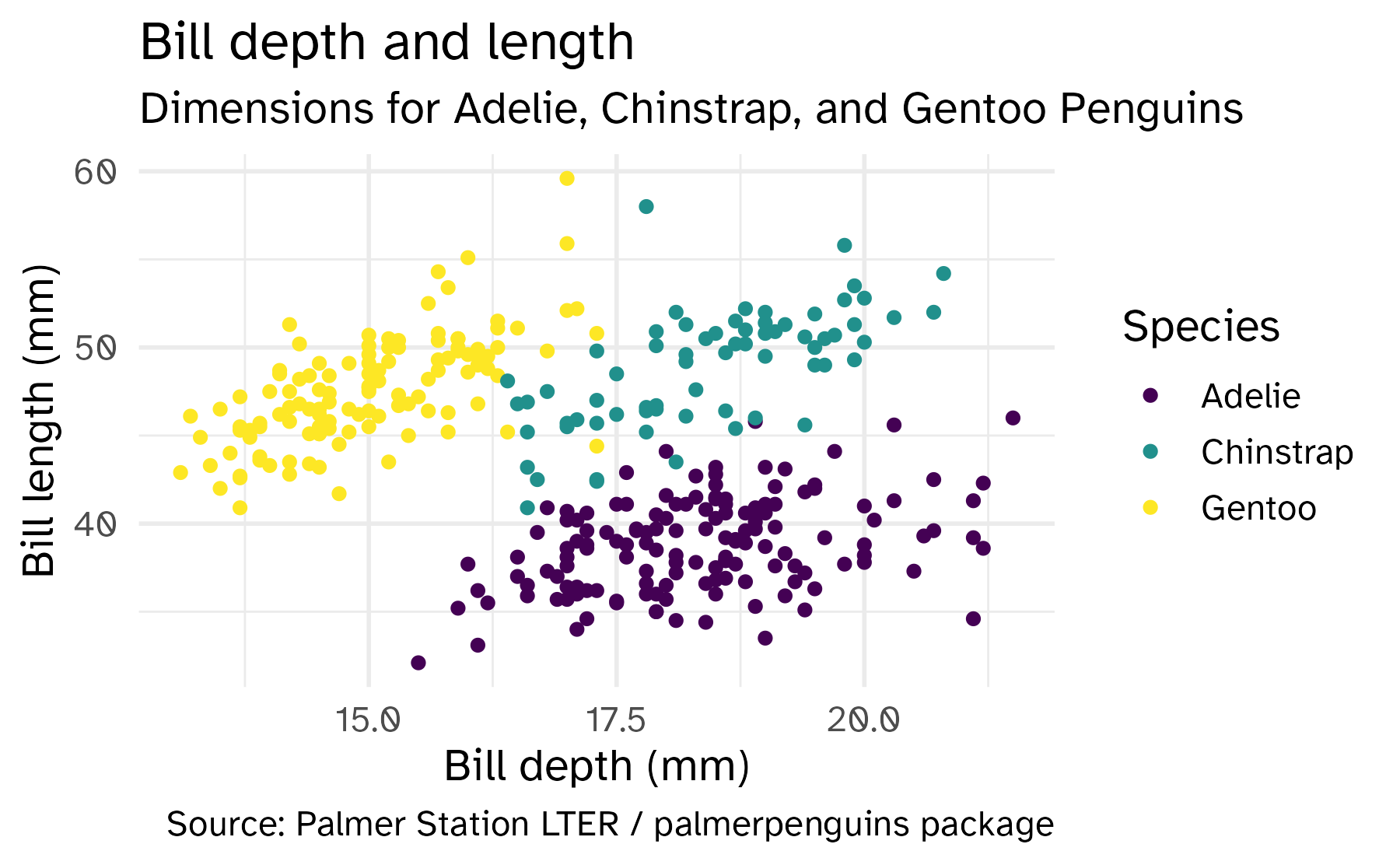

ggplot(data = penguins,
mapping = aes(x = bill_dep,
y = bill_len,
color = species)) +
geom_point() +
labs(title = "Bill depth and length",
subtitle = "Dimensions for Adelie, Chinstrap, and Gentoo Penguins",
x = "Bill depth (mm)", y = "Bill length (mm)",
color = "Species",
caption = "Source: Palmer Station LTER / palmerpenguins package") +
scale_color_viridis_d()Start with the penguins data frame, map bill depth to the x-axis and map bill length to the y-axis.
Represent each observation with a point and map species to the color of each point.
Title the plot “Bill depth and length”, add the subtitle “Dimensions for Adelie, Chinstrap, and Gentoo Penguins”, label the x and y axes as “Bill depth (mm)” and “Bill length (mm)”, respectively, label the legend “Species”, and add a caption for the data source.
Finally, use a discrete color scale that is designed to be perceived by viewers with common forms of color blindness.
“The best statistical graphic ever drawn”
Source: Wikipedia
Building Minard’s map in R
troops
# A tibble: 51 × 4
long lat survivors direction
<dbl> <dbl> <dbl> <chr>
1 24 54.9 340000 A
2 24.5 55 340000 A
3 25.5 54.5 340000 A
4 26 54.7 320000 A
5 27 54.8 300000 A
6 28 54.9 280000 A
7 28.5 55 240000 A
8 29 55.1 210000 A
9 30 55.2 180000 A
10 30.3 55.3 175000 A
# ℹ 41 more rowscities
# A tibble: 20 × 3
long lat city
<dbl> <dbl> <chr>
1 24 55 Kowno
2 25.3 54.7 Wilna
3 26.4 54.4 Smorgoni
4 26.8 54.3 Moiodexno
5 27.7 55.2 Gloubokoe
6 27.6 53.9 Minsk
7 28.5 54.3 Studienska
8 28.7 55.5 Polotzk
9 29.2 54.4 Bobr
10 30.2 55.3 Witebsk
11 30.4 54.5 Orscha
12 30.4 53.9 Mohilow
13 32 54.8 Smolensk
14 33.2 54.9 Dorogobouge
15 34.3 55.2 Wixma
16 34.4 55.5 Chjat
17 36 55.5 Mojaisk
18 37.6 55.8 Moscou
19 36.6 55.3 Tarantino
20 36.5 55 Malo-JarosewiiApplication exercise
ae-01
Instructions
Define the conceptual grammar of graphics for Minard’s visualization
Data
- Troops
- Latitude
- Longitude
- Survivors
- Advance/retreat
- Cities
- Latitude
- Longitude
- City name
Grammar of graphics components
- Layer
- Data
- Mapping
- Statistical transformation (stat)
- Geometric object (geom)
- Position adjustment (position)
- Scale
- Coordinate system
- Faceting
Aesthetics
Aesthetics options
Commonly used characteristics of plotting characters that can be mapped to a specific variable in the data are
colorshapesizealpha(transparency)
Color
Shape
Mapped to a different variable than color
Shape
Mapped to same variable as color
Size
Alpha
Mapping vs. setting
- Mapping: Determine the size, alpha, etc. of points based on the values of a variable in the data
- goes into
aes()
- goes into
- Setting: Determine the size, alpha, etc. of points not based on the values of a variable in the data
- goes into
geom_*()(this wasgeom_point()in the previous example, but we’ll learn about other geoms soon!)
- goes into
Faceting
Faceting
- Smaller plots that display different subsets of the data
- Useful for exploring conditional relationships and large data
Various ways to facet
In the next few slides describe what each plot displays. Think about how the code relates to the output.
Note: The plots in the next few slides do not have proper titles, axis labels, etc. because we want you to figure out what’s happening in the plots. But you should always label your plots!





Faceting summary
facet_grid():- 2 dimensional grid
rows = vars(<VARIABLE>), cols = vars(<VARIABLE>)- Alternative:
rows ~ cols
facet_wrap(): 1 dimensional ribbon wrapped according to number of rows and columns specified or available plotting area
Facet and color
Facet and color, no legend
Wrap up
Recap
- {ggplot2} is based on the grammar of graphics
- Use the
ggplot()function to initialize a plot aes()maps variables to aesthetics- Use
geom_*()to add geoms to a plot - Use
facet_*()to facet a plot
Acknowledgements
- Slides derived in part from Data Science in a Box
Something personal
TODO




